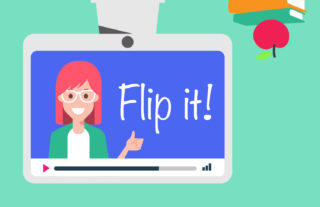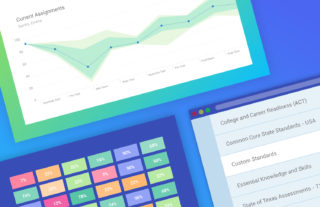What is Blended Learning and How Does It Work in the Classroom?


It’s true: Young people can’t get their noses out of their phones, which has led to the consternation of many educators. But at the same time, with Google giving us directions, Alexa reporting on the weather, and Instagram sharing our memories, our daily lives are already inextricably linked with technology. Over the last decade, a similar trend has expanded into our schools and classrooms. Rather than shunning technology, blended learning connects analog and digital in order to support young people and enhance their learning.

What is the definition of blended learning?
Simply put, blended learning is a method of teaching and learning in which students learn via electronic and online media as well as traditional face-to-face teaching. Instead of learning only from their teacher, and only interacting with their peers, students also engage with technology in order to meet learning goals.
Given the advances of technology over the last 10 years, the majority of students already have experienced at least some form of blended learning. At the same time, it’s important to note that simply the use of technology — say, to type an essay or to submit a homework assignment — does not constitute blended learning. In addition to the production of knowledge, students engaging in blended learning also acquire and apply knowledge with a combination of online and in-person modalities.
What is blended learning in the classroom?
Blended learning in the classroom typically requires that students have 1:1 access to an electronic device, usually a Chromebook. Some schools, rather than giving students computers, store and share Chromebooks in carts, in an effort to share resources. Either way, students must have ample and frequent opportunities to go online and use the internet in order for blended learning to occur.
While it’s not required in blended learning for students to have a combination of in-person and online learning on a daily basis, it’s certainly recommended. While some teachers prefer to reserve the online component for homework, best practice suggests that learning opportunities in the classroom also combine both analog and digital formats.
There are different model types of blended learning.
Depending on the interest and skill of the teacher, as well as access to technology, there are several model types of blended learning. These lie on a spectrum of the amount of in-person vs. online learning and the degree to which students have choice in their learning activities.
The face-to-face driver approach involves a majority of whole-class teacher-led instruction, with the teacher also in charge of delivering the online content and monitoring students. This online component is also done as a whole class, without students splitting off in groups or working individually.
When it comes to blended learning, a rotation approach, students in groups move through a set of online learning activities in the classroom with the guidance of a teacher. In other words, teacher-led instruction is minimized, and the students engage in common tasks online. The teacher determines the learning activities and requires that every student complete them all, like a checklist.
The flex and the self-blend approaches offer teachers and students more choice and flexibility. In flex, the online platform provides most of the curriculum and learning activities, while the teacher is available to support students individually or in small groups. Usually the online platform tailors and differentiates content based on student needs. In self-blend, students choose online enrichment content to supplement their learning in school, in order to expand their skills or to try on advanced coursework. This approach is already very popular with many students at the high school level.
Finally, in an online driver approach, the students do not or rarely come to a physical school, working remotely on online content. Teachers are available remotely for support. Students currently participating in distance or remote learning are learning with an online driver approach to blended learning.
Blended learning can be beneficial.
There are many benefits of blended learning. The first is that the practice offers more flexibility in the learning process. Rather than assuming that all students need the same information and skill-building, all at the same time and in the same way, blended learning allows for various learning activities, teaching approaches, pacing, and student groupings.
The second major benefit is that students enjoy a combination of face-to-face and online learning, resulting in greater engagement. Some learning — like applying knowledge, solving complex problems, collaborating with peers, and working on a project together — is best done with other young people. On the other hand, other learning — like targeted skill development, individual research, and exploratory enrichment — is best done alone, with the use of technology and the internet.
Perhaps the most crucial benefit, though, is that blended learning provides easier and more effective ways for teachers to differentiate learning material for their students. A simple example is that some students with Individualized Education Programs learn better when they have access to audio versions of texts. In a traditional classroom, that accommodation would mean that a teacher or an aide would need to read the text to the student. A blended approach, on the other hand, supports the student in a more tailored and efficient way. Furthermore, because blended learning normalizes the frequent use of technology, students who may unfortunately experience stigma because of their learning differences more comfortably engage in the classroom experience with less anxiety.
Is blended learning a pedagogy?
Despite its many benefits, some educators debate whether blended learning is a pedagogy, rather than an “approach” or a “method” of teaching and learning. If we agree that a pedagogy is a theory and practice of imparting skills and knowledge, then blended learning definitely qualifies as a pedagogy. Additionally, if a pedagogy also takes into consideration the interaction of students in the process of learning, blended learning again certainly constitutes a pedagogy.
For some education researchers, however, blended learning needs additional study to join constructivism and other more-established pedagogies. With the ubiquity of technology, and the rise of distance learning and hybrid models, there is no doubt that the future of K-12 education will become more and more blended. Most educators would say that the future has already arrived.




